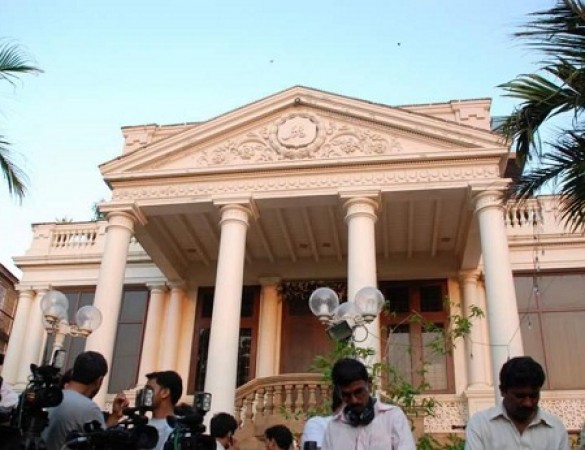
Bollywood films frequently serve as a reflection of the culture, fashion, and way of life of a particular era rather than just being a means of entertainment. The bungalow from the popular film "Tezaab" is an example of an iconic 1980s design that has managed to hold fans' attention to this day. This bungalow's transformation from Anupam Kher, a seasoned actor, to Shah Rukh Khan, the "King of Bollywood," in real life makes it even more fascinating. We'll explore this remarkable transformation's specifics in this piece, as well as its significance for Indian cinema history.
N. Chandra directed the 1988 film "Tezaab," which was a huge commercial success. Anil Kapoor and Madhuri Dixit played the lead roles in the romantic drama, which also featured some dance and action. Although the movie is known for its catchy dance numbers and top-charting music, one particular aspect that drew viewers in was the stunning bungalow that was featured in the production.
The bungalow, which provided the setting for several of the most important scenes in the movie, was visually appealing. It exuded an air of grandeur and sophistication, reflecting the opulence and aspirations of the characters, and was set in a lush green setting. But the bungalow's function in the movie went beyond that of a simple backdrop; it was crucial in determining the storyline and the lives of the characters.
Anupam Kher played Mr. D'Costa in the movie "Tezaab," who was the strict and dictatorial father of Madhuri Dixit's character Mohini. His persona was portrayed as a successful and powerful businessman who lived in the lavish bungalow, which later came to symbolise his status and power.
The bungalow, which served as Mr. D'Costa's home, represented more than just a physical space; it also represented his authority in the story and control over Mohini. The bungalow played a crucial role in the film's success because the contrast between the expansive interiors and the emotional turmoil within the family gave the story depth.
In the present, the bungalow that once belonged to Anupam Kher's character in the film "Tezaab" is now owned by none other than Shah Rukh Khan, the current king of Bollywood. This amazing conversion of a made-up movie set into a real-life home has a special place in Bollywood lore.
The bungalow was purchased in the early 2000s by Shah Rukh Khan, also referred to as "King Khan" or the "Badshah of Bollywood." In the same way that his on-screen characters have achieved their dreams and aspirations throughout their careers, Shah Rukh Khan has also achieved these goals in real life. It demonstrates his real achievements and the stature he has attained in the Indian film industry.
The transition of the Tezaab bungalow from Mr. D'Costa's fictional world to Shah Rukh Khan's real-life home highlights the special relationship between Bollywood and its viewers. Bollywood films frequently have an impact on audiences for years to come, and many fans have strong attachments to the settings and locations used in these films.
For "Tezaab" fans, the bungalow is more than just a beautiful piece of architecture; it also serves as a reminder of simpler times and a symbol of Indian cinema's enduring influence. It serves as a reminder of Bollywood's magic and allure, where fantasies are woven into the silver screen and frequently come to pass.
The bungalow that was once the setting for Anupam Kher's character in "Tezaab" has undergone a remarkable transformation over the years and is now Shah Rukh Khan's beloved home. This change represents the seamless blending of fiction and reality in Bollywood, where characters' aspirations frequently coincide with those of the actors who play them.
The Tezaab bungalow is still a living example of Bollywood's enduring appeal and its capacity to enthral viewers of all ages. It represents the cinematic magic that continues to enthral fans all over the world and is more than just a physical structure. The iconic Tezaab bungalow, now permanently etched in the annals of Indian cinema, endures just as the legacy of Bollywood does.
Siddharth Malhotra's Career Crossroads, The 'Fashion' Dilemma